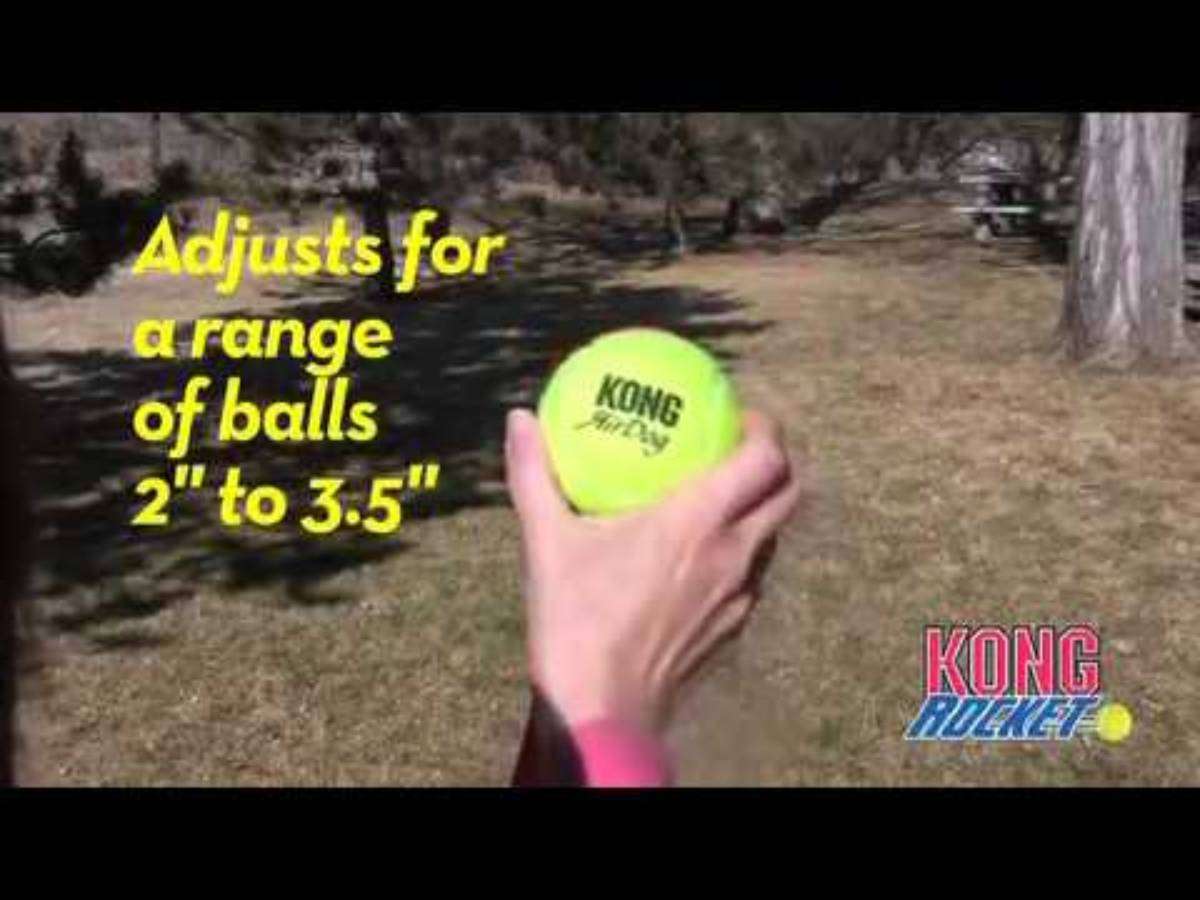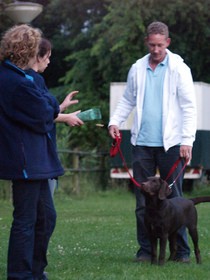 A lot of dogs are having problems today because of their past. What would it take to change that?
A lot of dogs are having problems today because of their past. What would it take to change that?
Many dog owners are simply not aware of just how important it is for a dog to be introduced to a lot of different stimulants in a lot of different ways when they are very young. Even veterinarians often advise to keep young dogs away from too many influences from the outside before they have all of the shots required to be “safe.”
This is one of the moments where it is important to follow what you know. You are going to be the one who will have to ask yourself the question whether your dog is going to be alright (without the shots) to meet another dog, another person, or another pet.
You need to be aware of the possibility that your young dog might be exposed to a disease from those interactions. This is not a situation where you can follow a “rule.” Instead, it is a situation where you are required to ask a question. And you are required to ask this question every time. There will not be a one-time answer you can follow. You will have to weigh the risks and benefits of the situation!
It’s a fact that your dog — in the early stages of his life — needs to be exposed to as many situations, people, other dogs, and other animals as possible. A well-socialized dog is a happy dog! And socialization should start during puppyhood. If you wait until your dog is older, you will be faced with all sorts of challenges, and your dog will be faced with all sorts of fears.
What Is Socialization?
Well, it’s like your dog has to learn how to be in the world.
A lot of behaviors are learned. So when your dog is exposed to a lot of different situations, and you guide him through them, you can help him to see that those situations are not in need of a reaction (like fear, hiding or fighting).
It is important that you guide your dog in new situations.
How To Socialize A Young Dog
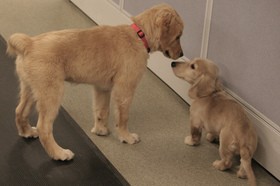 A very important aspect of this is your energy and willingness to be in the leading role. Your dog will be looking to you for guidance, so you can’t be letting him decide what to do in each new environment.
A very important aspect of this is your energy and willingness to be in the leading role. Your dog will be looking to you for guidance, so you can’t be letting him decide what to do in each new environment.
Instead, be calm and show him what to do. If your little dog seems overwhelmed, then back off a bit. Let him adjust and move in again. Do all of this calmly, and let him know that you will protect him from the other influences as well as challenge him to not run away or act out.
Praise him for being calm and if he desires to run away in fear, correct that behavior gently. Then ask yourself where you have to be and how you have to be in order for him to relax.
The goal is to have your dog be relaxed. If your young dog learns that you will guide him through any new situation and that he always comes out alright, then he will be a well-balanced dog! So the more situations you can expose him to at an early age, the better those skills will develop naturally in your dog.
The formation of a dog’s social habits are mostly done between 5 weeks and 4 months of age. That is why picking your dog from a great breeder (or home) can be of the essence.
Tips For Socializing An Older Dog
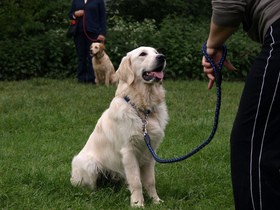 If you have an older dog from the shelter, and your dog has not been socialized, then you will have to devote a lot of extra time and patience to the process of socializing your dog.
If you have an older dog from the shelter, and your dog has not been socialized, then you will have to devote a lot of extra time and patience to the process of socializing your dog.
Some of these dogs will never be totally relaxed in new situations, but they can come really far. I have met many great individuals that rehabbed a very fearful dog into a wonderful companion that can be trusted and taken everywhere.
Just be aware that if you are about to adopt a dog like that, you have a work schedule cut out for you. These dogs have to be exposed to whatever it is they are fearful of in a very aware manner. You will have to be wiling to ask your dog lot of questions on how far you can “push” him and what situation you can start with.
If you are socializing him with other dogs, it’s best to set up the situation with a person you know and a dog that is very non-threatening, easy-going, not too active, and definitely not grumpy.
You can start by joining together in a walk on neutral territory (not in your dog’s own yard, not in the yard of the other dog, but maybe in a neighborhood park). The people should be in the middle, with the dogs on the outside on leash.
Don’t put your focus on the dogs. Instead, have a conversation with each other — keep it light and easy! If your dog is fearful at this time, then add some more distance, but keep moving. Don’t stand there and wait for something to occur.
How you start and how fast you move forward all depends on your particular situation. Once your dog is doing well with this other dog, then you can move forward to trying this activity with other dogs.
I recommend that you set up these meetings with people and dogs that you know, so that you can be relaxed — which is the most important thing. Since your energy feeds into your dog, if you are nervous, your dog will not know that you are nervous about him. Instead, he will assume that you are nervous about the situation. As a result, he will feel that he has to do something about that.
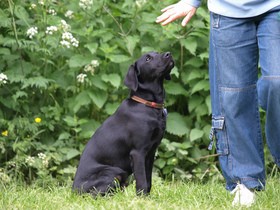 So, again, please make sure you are the example for your dog! You need to be aware of what your dog requires to become calm, cool and collected when it comes to meeting dogs, men with hats, noisy children, and other pets.
So, again, please make sure you are the example for your dog! You need to be aware of what your dog requires to become calm, cool and collected when it comes to meeting dogs, men with hats, noisy children, and other pets.
Remember, a well-socialized dog will be much more relaxed in the world and less likely to have unwanted behaviors. Socializing your dog — as a puppy — is definitely a win-win for both you and your dog!
Need some advice or training tips regarding your own dog? I would be happy to help you solve dog training and behavior issues right over the phone — just like I was able to help Jim and Lynnette with their dog who used to be anxious and nervous around people.



